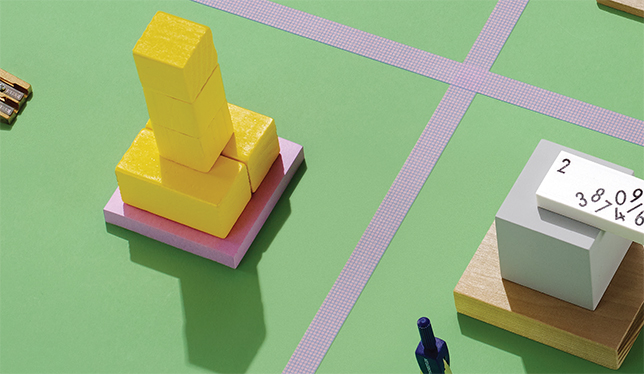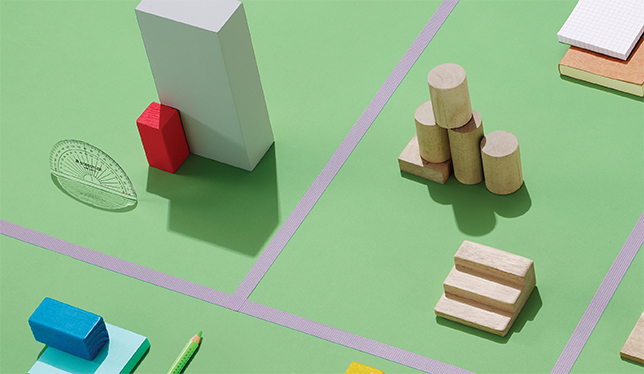To visit the Ryerson City Building Institute, you enter at 10 Dundas St. East, which is steps from Toronto’s noisy Yonge Street, sky-high billboards and the often chaotic Dundas Square. Turn right at the busy Starbucks kiosk on the main floor and take a tiny elevator up to the 10th floor.
The institute’s modest offices – it has four staff members – are a few storeys above the home base of Ryerson University’s ever-expanding business incubator, the DMZ. It’s also some floors higher than the Cineplex Odeon multiplex, whose theatres double as lecture halls on weekday mornings. The institute’s executive director, Cherise Burda, calls this a “really good use of space.”
Ms. Burda’s organization writes – either on its own or in partnership with others, including Ryerson faculty – policy papers on issues such as housing costs, rent control and public transportation. It helps run events such as Yonge Love, a “meet-up” which gathered together urban planners, policy-makers, representatives from others cities and Ryerson to talk about development plans along Yonge Street.
While the institute does not physically build anything, its projects – and location – dovetail nicely with the infrastructure work that Ryerson has championed in this dense corner of downtown. The university moved its Ted Rogers School of Management into the Eaton Centre, took over a part of the historic Maple Leaf Gardens for a recreation centre (the public gets frequent use of the iconic ice surface) and recently built a student centre on the site of the old flagship Sam the Record Man store.
By virtue of its location and its driving ethos, Ryerson is one of the Canadian leaders in city-building – a multi-pronged approach that universities are taking to lead urban development. “It’s not just building a city with our physical infrastructure. It’s the social programs, it’s the services, it’s the policies. And the investment and thinking and imagining and vision around how we grow our urban areas,” Ms. Burda explains.
Universities have always built buildings, and over the decades have studied and given evidence-based input on issues related to urban planning, architecture, housing, transit and social programs. But the city-building movement – which is happening across Canada and around the developed world – takes a proactive approach. Through shared spaces, partnerships, university-led public symposia, grassroots projects and media conversations, universities increasingly want to influence the development agenda of the cities in which they reside.
“There’s a real, intentional effort being made to connect with the city we’re in the middle of in so many ways,” says Shauna Brail, the presidential adviser on urban engagement at the University of Toronto. “It’s about being purposeful about what kind of city we want to see.”
And by transforming the cities around them, universities are transforming themselves. “It’s not the city or the university,” says Janet Moore, associate professor with Simon Fraser University’s Centre for Dialogue and co-founder of CityStudio Vancouver, a project that has students, community members and city staff working together. “It’s this hybrid space of learning.”
Indeed, as city-building projects get more sophisticated and universities grow creatively into their surrounding neighbourhoods, the lines blur. No one knows where a campus begins and ends. The university is “of the city,” says Ryerson’s Ms. Burda. “It’s not just a little fortress; it’s integrated into the city.”

Universities carved out their early identities as sanctuaries of prestigious learning. They stayed gorgeously detached in stately buildings surrounded by green fields behind stone gates. Then, starting around the middle of the 20th century, the emerging idea of the public university linked schools to regional economic and social benefits. Canada encouraged new colleges and universities to open up, although mainly in suburban locales. “The campus away from the city became the norm,” says Andrew Petter, president of SFU.
Ironically, many of these new campuses on cheap farmland, far from housing or transit hubs, put up gates. While some universities nurtured community relationships from the start – SFU’s history of building out its Burnaby campus with community input and growing its Vancouver site right into the neighbourhood is notable – many schools felt little need to interact with locals.
At York University, in Toronto’s north end, “we had this terrible relationship with the nearby community,” recalls Roger Keil, who’s been at York for 25 years, where he holds the York Chair in Global Sub/Urban Studies. The Black Creek valley was effectively “a moat to keep the kids out,” he says. Meanwhile, downtown institutions such as Ryerson paid little heed to the low-income neighbourhoods on one side, and gave minimal input to corporate and retail development on the other.
All the while, our urban population continued to expand (according to Statistics Canada, in 2011, 81 percent of Canadians lived in urban areas). And as community-based research projects, government and private partnerships and co-op programs grew, a wider range of universities came to better understand and connect with their neighbours. Those building out the university physically also started to talk with those around them; urban schools bargained for space while suburban universities advocated for transit and housing. As a result of all this activity, communities came to look to universities for guidance.
Then, suddenly, talk of city-building came into it. In 2011, Sheldon Levy, then president of Ryerson, stated in a TEDx Talk, “As we are building the university we are building the city.” Around the same time, Lloyd Axworthy, then president of the University of Winnipeg, told the Winnipeg Free Press that the campus is “central to the definition of Winnipeg,” adding that the university “is not an island in the community, we’re part of it.” (In the early 1970s, before entering politics, Dr. Axworthy was the director of the university’s Institute of Urban Affairs.) Also in 2011, Dr. Moore and Duane Elverum, who was at Emily Carr University of Art + Design at the time and is now at SFU, founded CityStudio.
By 2014, the trend seemed to really take hold in Canada. “Universities have an increasingly important role to play in their community and in all aspects of the city’s evolution,” McGill University principal Suzanne Fortier stated to Montreal’s board of trade that spring. A month later, U of T president Meric Gertler, a renowned urban theorist, stated in a talk to the Toronto Region Board of Trade: “Simply put, a strong university helps build a strong city.” (When he took over as U of T president in 2013, one of Dr. Gertler’s three priorities was to “leverage our urban locations more fully, for the mutual benefit of university and city.”) In 2015, SFU ran a weeklong community summit on city-building.
Now, in 2017, this work is in full force at universities across the country, in cities big and small. In January, the city council in Kingston, Ontario, voted in favour of an agreement that will see Queen’s University and the city work together to support innovation, economic development and the retention of more young people in the community. In February, the University of Calgary launched Civic Innovation YYC, which links up the university, the community and government for collaboration on city-related ideas and projects.
In June, the City of Montreal signed a five-year agreement with the 10 universities and colleges that have a presence in the city to recognize the role that they play in its economic and social development. The universities commit to “encouraging and facilitating collaboration between professors, researchers and research groups, in order to document, study and resolve various issues identified by the city.”
And, in mid-September, a Saskatoon city council committee voted in favour of pursuing a memorandum of understanding between the University of Saskatchewan and city hall that outlines several areas of potential collaboration, particularly land development. The city’s mayor, Charlie Clark, told reporters: “A good partnership here could transform what the future of the city looks like.”

City-building comes in many forms and often starts small. Jim Silver, professor and chair of urban and inner-city studies at U of Winnipeg, was doing community-based research in the city’s low-income, predominantly Indigenous north end, and thought that opening an office and classrooms there could help to recruit students. His superiors at the university said no, but he got his idea to the ears of Dr. Axworthy, who said, “That’s a good idea.”
“It worked so well,” Dr. Silver recalls of his storefront outpost, which opened in 2010. “It’s normalized the idea of postsecondary education.” Local kids started taking his classes and ended up enroling in degree programs. Undergraduates from the main campus came to the Selkirk Avenue site, too. “Some of them have never set foot in the north end. It’s transformational for them,” he says.
But Dr. Silver knew that eyesores like the Merchant’s Hotel, which he called “a magnet for all manner of inner-city-type problems,” were curbing change in the neighbourhood. In 2011, he and his team, working with the community and the government, shut it down. They bought the 1913 hotel, plus several adjoining lots, demolished it and raised $15 million (most of it from the government) to build a new home for the department.
When it’s done in January 2018, this new complex will offer university courses, after-school programs for high school kids, preschool and adult programs in Oji-Cree, and all will be fed by a café run by a local high school’s culinary arts program. It’ll also contain 30 subsidized affordable housing units for students. Separately, the university has other outreach programs and recently built a recreation complex that it shares with the community.
Farther west, in 2010, the mayor of Vancouver declared that the city would be the greenest in the world by 2020 and wanted ideas. Drs. Moore and Elverum came up with the idea of partnering with the city and having students run small, grassroots projects to get little things done. “We call it urban acupuncture,” says Dr. Moore. “If we paint streets, it changes the way you think about your city.” Word about their concept got out on social media, the city heard about it and suddenly the duo had an office at city hall.
CityStudio Vancouver is now a partnership between six postsecondary institutions, which send their students to city hall to tackle a project and get school credit. Students have done “work that would not get done” otherwise, including reviving an old idea for bike repair stations, putting second-hand pianos in parks over the summer and piloting a red bin program in a park to divert dog poo from the waste stream. Many CityStudio projects endure, years later, and have expanded (there are red bins all over the city now).
CityStudio openly shares its concept, and five other cities have launched their own chapters – in Victoria, in collaboration with the University of Victoria, Royal Roads University and Camosun College; in Corner Brook, Newfoundland, in partnership with Memorial University’s Grenfell Campus; in Waterloo and Brantford in Ontario, in concert with Wilfrid Laurier University; and in Hamilton, Ontario, under the name CityLAB, in collaboration with McMaster University, Redeemer University and Mohawk College.
An array of administrative structures seems to suit city-building projects. In Toronto, the presidents of the area’s four universities (U of T, Ryerson, York and OCAD University) meet often, and they decided in 2015 to chip in to fund a study on student transportation. StudentMoveTO published its preliminary results in 2016. And, just this past August, the four presidents announced a new, massive joint research project on affordable student housing, called StudentDwellTO, involving nearly 100 faculty and students. (The four presidents also worked together on Lifeline Syria, which has now sponsored over 1,000 Syrian refugees.)
And then there are the countless small projects running across the country. Such as the two groups of architecture students at Carleton University that turned parking spaces into pop-up “parklets,” complete with seating, flowers and rainwater collection, in 2016. Local business groups funded the one-year pilot project, which aimed to convert 25 parking spots into parks.

Universities that work to invigorate their regions do so out of “enlightened self-interest,” says U of T’s Dr. Gertler. “Quality of life is one of our most important assets, one of the things that helps us attract and retain staff and students,” he says. These projects also allow students to pump up their resumés. “They can use their project in terms of getting a job. It’s a great story to tell in an interview,” says Dr. Moore.
Cities, communities and businesses endorse this work. When Dr. Gertler first spoke of city-building when he joined U of T, he expected backlash. “I’ve been pleasantly surprised that these ideas really have been embraced. I’ve gotten very little negative feedback.”
The only holdouts seem to be very traditional faculty members. “If you yearn for the ivory tower model and being more dissociated from community, you may see this weakens the academic mission,” says SFU’s Mr. Petter, who adds that he disagrees with this notion.
Despite all this activity, challenges remain. As with any university project, if it’s just one professor running it, it risks being lost when that person moves on or loses funding. As well, students may struggle when the slow work of cities and community partners don’t synch with their deadlines. Dr. Brail at U of T spoke recently to a PhD student dealing with a community group and a looming thesis deadline. “His key concern was finishing on time.”
There are also concerns that the growing conversation around cities is forgetting about the suburbs, which is where the country is actually seeing the most population growth. Transit, poverty, diversity and other issues in a suburban context can actually be much more complex and difficult to manage.
Plans and projects can also get caught up in red tape and the competing priorities of stakeholders. York’s Dr. Keil, who’s been part of a planning group in the region for years, laments that “it’s difficult to see if we had any direct influence.” He says he sometimes feels “we have to yell very loudly for anyone to listen to us.”
Nevertheless, the demand keeps growing for city-building projects big and small. Ryerson’s City Building Institute gets frequent requests but can’t pursue them all. “I don’t have enough capacity,” says Ms. Burda.
Dr. Gertler thinks the dividing lines between the university and the city will keep growing fainter, spurred on by needs from the outside community, faculty’s desire to see more evidence-based planning and student demand for local experiential learning. “I only see the tip of the iceberg in what’s going to be a very powerful force in the university,” says Dr. Gertler. “It is pushing us to turn outward and embrace our neigbours locally and globally.”
